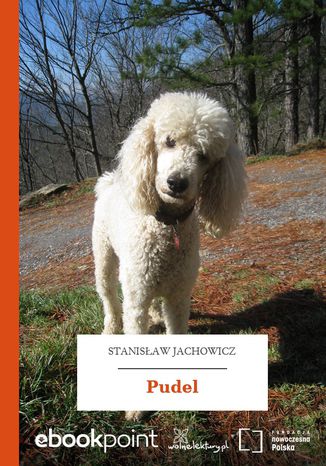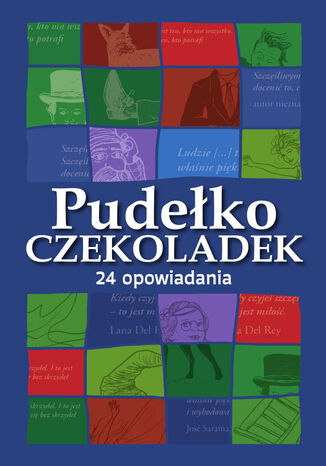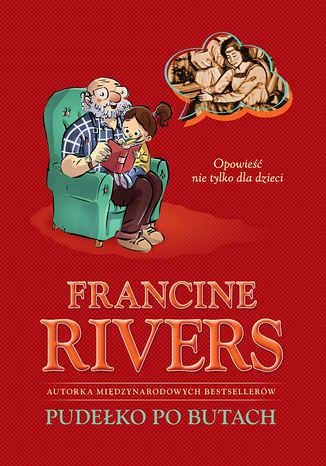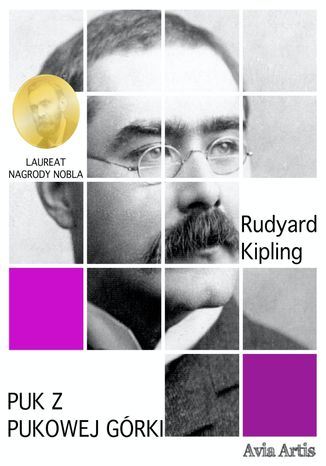Kategorien
E-Books
-
Wirtschaft
- Bitcoin
- Geschäftsfrau
- Coaching
- Controlling
- E-Business
- Ökonomie
- Finanzen
- Börse und Investitionen
- Persönliche Kompetenzen
- Computer im Büro
- Kommunikation und Verhandlungen
- Kleines Unternehmen
- Marketing
- Motivation
- Multimedia-Training
- Immobilien
- Überzeugung und NLP
- Steuern
- Sozialpolitik
- Handbȕcher
- Präsentationen
- Führung
- Public Relation
- Berichte, Analysen
- Geheimnis
- Social Media
- Verkauf
- Start-up
- Ihre Karriere
- Management
- Projektmanagement
- Personal (HR)
-
Für Kinder
-
Für Jugendliche
-
Bildung
-
Enzyklopädien, Wörterbücher
-
E-Presse
- Architektura i wnętrza
- Sicherheit und Gesundheit am Arbeitsplatz
- Biznes i Ekonomia
- Haus und Garten
- E-Business
- Ekonomia i finanse
- Esoterik
- Finanzen
- Persönliche Finanzen
- Unternehmen
- Fotografie
- Informatik
- HR und Gehaltsabrechnung
- Frauen
- Computer, Excel
- Buchhaltung
- Kultur und Literatur
- Wissenschaftlich und akademisch
- Umweltschutz
- meinungsbildend
- Bildung
- Steuern
- Reisen
- Psychologie
- Religion
- Landwirtschaft
- Buch- und Pressemarkt
- Transport und Spedition
- Gesundheit und Schönheit
-
Geschichte
-
Informatik
- Office-Programme
- Datenbank
- Bioinformatik
- IT Branche
- CAD/CAM
- Digital Lifestyle
- DTP
- Elektronik
- Digitale Fotografie
- Computergrafik
- Spiele
- Hacking
- Hardware
- IT w ekonomii
- Wissenschaftliche Pakete
- Schulbücher
- Computergrundlagen
- Programmierung
- Mobile-Programmierung
- Internet-Server
- Computernetzwerke
- Start-up
- Betriebssysteme
- Künstliche Inteligenz
- Technik für Kinder
- Webmaster
-
Andere
-
Fremdsprachen lernen
-
Kultur und Kunst
-
Lektüre
-
Literatur
- Anthologien
- Ballade
- Biografien und Autobiografien
- Für Erwachsene
- Drama
- Tagebücher, Memoiren, Briefe
- Epos
- Essay
- Science Fiction
- Felietonys
- Fiktion
- Humor, Satire
- Andere
- Klassisch
- Krimi
- Sachbücher
- Belletristik
- Mity i legendy
- Nobelpreisträger
- Kurzgeschichten
- Gesellschaftlich
- Okultyzm i magia
- Erzählung
- Erinnerungen
- Reisen
- Gedicht
- Poesie
- Politik
- Populärwissenschaftlich
- Roman
- Historischer Roman
- Prosa
- Abenteuer
- Journalismus
- Reportage
- Romans i literatura obyczajowa
- Sensation
- Thriller, Horror
- Interviews und Erinnerungen
-
Naturwissenschaften
-
Sozialwissenschaften
-
Schulbücher
-
Populärwissenschaft und akademisch
- Archäologie
- Bibliotekoznawstwo
- Filmwissenschaft
- Philologie
- Polnische Philologie
- Philosophie
- Finanse i bankowość
- Erdkunde
- Wirtschaft
- Handel. Weltwirtschaft
- Geschichte und Archäologie
- Kunst- und Architekturgeschichte
- Kulturwissenschaft
- Linguistik
- Literaturwissenschaft
- Logistik
- Mathematik
- Medizin
- Geisteswissenschaften
- Pädagogik
- Lehrmittel
- Populärwissenschaftlich
- Andere
- Psychologie
- Soziologie
- Theatrologie
- Teologie
- Theorien und Wirtschaftswissenschaften
- Transport i spedycja
- Sportunterricht
- Zarządzanie i marketing
-
Handbȕcher
-
Spielanleitungen
-
Professioneller und fachkundige Leitfaden
-
Jura
- Sicherheit und Gesundheit am Arbeitsplatz
- Geschichte
- Verkehrsregeln. Führerschein
- Rechtswissenschaften
- Gesundheitswesen
- Allgemeines. Wissenskompendium
- akademische Bücher
- Andere
- Bau- und Wohnungsrecht
- Zivilrecht
- Finanzrecht
- Wirtschaftsrecht
- Wirtschafts- und Handelsrecht
- Strafrecht
- Strafrecht. Kriminelle Taten. Kriminologie
- Internationales Recht
- Internationales und ausländisches Recht
- Gesundheitsschutzgesetz
- Bildungsrecht
- Steuerrecht
- Arbeits- und Sozialversicherungsrecht
- Öffentliches, Verfassungs- und Verwaltungsrecht
- Familien- und Vormundschaftsrecht
- Agrarrecht
- Sozialrecht, Arbeitsrecht
- EU-Recht
- Industrie
- Agrar- und Umweltschutz
- Wörterbücher und Enzyklopädien
- Öffentliche Auftragsvergabe
- Management
-
Führer und Reisen
- Afrika
- Alben
- Südamerika
- Mittel- und Nordamerika
- Australien, Neuseeland, Ozeanien
- Österreich
- Asien
- Balkan
- Naher Osten
- Bulgarien
- China
- Kroatien
- Tschechische Republik
- Dänemark
- Ägypten
- Estland
- Europa
- Frankreich
- Berge
- Griechenland
- Spanien
- Niederlande
- Island
- Litauen
- Lettland
- Mapy, Plany miast, Atlasy
- Miniführer
- Deutschland
- Norwegen
- Aktive Reisen
- Polen
- Portugal
- Andere
- Przewodniki po hotelach i restauracjach
- Russland
- Rumänien
- Slowakei
- Slowenien
- Schweiz
- Schweden
- Welt
- Türkei
- Ukraine
- Ungarn
- Großbritannien
- Italien
-
Psychologie
- Lebensphilosophien
- Kompetencje psychospołeczne
- zwischenmenschliche Kommunikation
- Mindfulness
- Allgemeines
- Überzeugung und NLP
- Akademische Psychologie
- Psychologie von Seele und Geist
- Arbeitspsychologie
- Relacje i związki
- Elternschafts- und Kinderpsychologie
- Problemlösung
- Intellektuelle Entwicklung
- Geheimnis
- Sexualität
- Verführung
- Aussehen ind Image
- Lebensphilosophien
-
Religion
-
Sport, Fitness, Diäten
-
Technik und Mechanik
Hörbücher
-
Wirtschaft
- Bitcoin
- Geschäftsfrau
- Coaching
- Controlling
- E-Business
- Ökonomie
- Finanzen
- Börse und Investitionen
- Persönliche Kompetenzen
- Kommunikation und Verhandlungen
- Kleines Unternehmen
- Marketing
- Motivation
- Immobilien
- Überzeugung und NLP
- Steuern
- Sozialpolitik
- Handbȕcher
- Präsentationen
- Führung
- Public Relation
- Geheimnis
- Social Media
- Verkauf
- Start-up
- Ihre Karriere
- Management
- Projektmanagement
- Personal (HR)
-
Für Kinder
-
Für Jugendliche
-
Bildung
-
Enzyklopädien, Wörterbücher
-
E-Presse
-
Geschichte
-
Informatik
-
Andere
-
Fremdsprachen lernen
-
Kultur und Kunst
-
Lektüre
-
Literatur
- Anthologien
- Ballade
- Biografien und Autobiografien
- Für Erwachsene
- Drama
- Tagebücher, Memoiren, Briefe
- Epos
- Essay
- Science Fiction
- Felietonys
- Fiktion
- Humor, Satire
- Andere
- Klassisch
- Krimi
- Sachbücher
- Belletristik
- Mity i legendy
- Nobelpreisträger
- Kurzgeschichten
- Gesellschaftlich
- Okultyzm i magia
- Erzählung
- Erinnerungen
- Reisen
- Poesie
- Politik
- Populärwissenschaftlich
- Roman
- Historischer Roman
- Prosa
- Abenteuer
- Journalismus
- Reportage
- Romans i literatura obyczajowa
- Sensation
- Thriller, Horror
- Interviews und Erinnerungen
-
Naturwissenschaften
-
Sozialwissenschaften
-
Populärwissenschaft und akademisch
- Archäologie
- Philosophie
- Wirtschaft
- Handel. Weltwirtschaft
- Geschichte und Archäologie
- Kunst- und Architekturgeschichte
- Kulturwissenschaft
- Literaturwissenschaft
- Mathematik
- Medizin
- Geisteswissenschaften
- Pädagogik
- Lehrmittel
- Populärwissenschaftlich
- Andere
- Psychologie
- Soziologie
- Teologie
- Zarządzanie i marketing
-
Handbȕcher
-
Professioneller und fachkundige Leitfaden
-
Jura
-
Führer und Reisen
-
Psychologie
- Lebensphilosophien
- zwischenmenschliche Kommunikation
- Mindfulness
- Allgemeines
- Überzeugung und NLP
- Akademische Psychologie
- Psychologie von Seele und Geist
- Arbeitspsychologie
- Relacje i związki
- Elternschafts- und Kinderpsychologie
- Problemlösung
- Intellektuelle Entwicklung
- Geheimnis
- Sexualität
- Verführung
- Aussehen ind Image
- Lebensphilosophien
-
Religion
-
Sport, Fitness, Diäten
-
Technik und Mechanik
Videokurse
-
Datenbank
-
Big Data
-
Biznes, ekonomia i marketing
-
Cybersicherheit
-
Data Science
-
DevOps
-
Für Kinder
-
Elektronik
-
Grafik / Video / CAX
-
Spiele
-
Microsoft Office
-
Entwicklungstools
-
Programmierung
-
Persönliche Entwicklung
-
Computernetzwerke
-
Betriebssysteme
-
Softwaretest
-
Mobile Geräte
-
UX/UI
-
Web development
-
Management
Podcasts
Pucking Around 1. Jacksonville Rays. Tom 1
Nie mogę zakochać się w żadnym graczu nie mówiąc już o trzech! Nazywam się Rachel Price i dwa miesiące temu spotkałam idealnego mężczyznę. Spędziliśmy razem magiczną noc było uroczo, zabawnie i bardzo namiętnie. Żadnych imion, żadnych zobowiązań. Myślałam, że już nigdy go nie zobaczę. Myliłam się. Okazuje się, że mój doskonały kochanek jest playboyem i obrońcą Jacksonville Rays, najgłośniejszej drużyny hokejowej w NHL, a ja jestem jego nową fizjoterapeutką. Aha, i ten kretyn nawet mnie nie rozpoznał! Zapowiada się kilka naprawdę ciekawych miesięcy. Mój idealny mężczyzna zrobi wszystko, żeby zdobyć moje uznanie. Tymczasem jego najlepszym przyjacielem jest gburowaty pracowniktechniczny, który zawsze mnie krytykuje. A do tego mam niechętnego do współpracy bramkarza, który stara się ukryć kontuzję To moja szansa, żeby się wykazać zawodowo, i nie mam zamiaru ryzykować. Ale jeśli miłość to gra, ci goście grają, aby wygrać. Pucking Around to burzliwy hokejowy romans, który otwiera bestsellerową serię Jacksonville Rays.
Jake daje mi radość. Caleb przynosi ukojenie. Ilmari to mojaopoka. Chcę ich wszystkich Nazywam się Rachel Price. Kilka miesięcy temu zaczęłam staż jako fizjoterapeutka w drużynie Jacksonville Rays i to wywróciło moje życie do góry nogami. Właśnie tu spotkałam trzech mężczyzn, którzy nie mogą bardziej się od siebie różnić. Trzech mężczyzn, którym pomagam odkryć, kim są i czego tak naprawdę chcą. Trzech mężczyzn, których wzajemne relacje nie należą do najprostszych. Wiem, że mam wiele twarzy i jedna, nawet idealna osoba nie może zaspokoić mnie w pełni Czy jednak wszyscy trzej potrafią się dzielić, tak jak ja? Drugi tom hokejowego romansu, otwierającego bestsellerową serię Jacksonville Rays. Książka 18+
Pucek był dorosłym zającem i doskonale znał wszystkie zakamarki leśne. Mieszkał na skraju lasu w niedużym domku – w pokoju z kuchnią i łazienką. Obok kuchni był magazyn, w którym szarak przechowywał śrubki, młotki, stary rower, hulajnogę i inne cenne rzeczy. Był bojaźliwy – jak to zając. Może dlatego jego słuchy oklapły, a ogon, czyli omyk ciągle drżał jak listek na wietrze. Parę skoków dalej szarak miał też dużą spiżarnię. Gromadził w niej zapasy na zimę. Leśni przyjaciele mówili, że jest prawdziwym kolegą. Myślę, że to prawda! Zresztą przekonacie się już niebawem.
Stanisław Jachowicz Bajki i powiastki Pudel A kto mi wypił moje mleko z garnka? Mówiła raz kucharka Tak, doprawdy, ty widzę: bo masz białą brodę. Jakże-to było? powiedz, znana mi twa cnota: I chciałżebyś szkodnego naśladować kota? Pies się bardzo zawstydził, i zawył żałośnie, Wyrzutów takich słuchać było mu nieznośnie; A gdy ... Stanisław Jachowicz Ur. 17 kwietnia 1796 w Dzikowie (dziś dzielnica Tarnobrzega) Zm. 24 grudnia 1857 w Warszawie Najważniejsze dzieła: Rozmowy mamy z Józią służące za wstęp do wszelkich nauk, a mianowicie do gramatyki, ułożone dla pożytku młodzieży, Pisma różne wierszem Stanisława Jachowicza, Śpiewy dla dzieci, Rady wuja dla siostrzenic: (upominek dla młodych panien), Pomysły do poznania zasad języka polskiego, Ćwiczenia pobożne dla dzieci, rozwijające myśl, Podarek dziatkom polskim: z pozostałych pism ś. p. Stanisława Jachowicza, Upominek z prac Stanisława Jachowicza: bajki, nauczki, opisy, powiastki i różne wierszyki Poeta, bajkopisarz, pedagog, działacz charytatywny. Ukończył szkołę pijarów w Rzeszowie oraz gimnazjum w Stanisławowie. Studiował na wydziale filozoficznym na Uniwersytecie we Lwowie. Na studiach był współzałożycielem i wpływowym członkiem tajnego Towarzystwa Ćwiczącej się Młodzieży w Literaturze Ojczystej, a także inspiratorem i prezesem Towarzystwa Studenckiego Koła Literacko-Naukowego. Po studiach zamieszkał w Warszawie, gdzie objął posadę kancelisty w Prokuratorii Generalnej Królestwa Polskiego. Przystąpił do Związku Wolnych Polaków, po wykryciu którego otrzymał zakaz zajmowania posad rządowych. Wobec tego jego głównym zajęciem była praca pedagogiczna jako nauczyciela języka polskiego w domach i na prywatnych stancjach dla dziewcząt. Debiut literacki Jachowicza miał miejsce w 1818 r. w Pamiętniku lwowskim, gdzie opublikował bajki. Pierwszą książkę wydał w 1824 r. - zbiór bajek i powiastek pt. Bajki i powieści. Przez cztery kolejne lata ukazywały się rozszerzone wydania tego zbioru pod tym samym tytułem; w 1829 r. zbiór zawierał już 113 utworów. Jest autorem kilkuset wierszyków i powiastek dydaktyczno-moralizatorskich. Publikował również w periodykach pod własnym nazwiskiem lub pod pseudonimem Stanisław z Dzikowa. W 1829 r. redagował przez rok Tygodnik dla Dzieci. W W 1830 r. przy współudziale Ignacego Chrzanowskiego zaczął wydawać pierwsze w Europie codzienne pismo dla dzieci - Dziennik dla Dzieci. Publikowane przez niego gazety i książki miały wychowywać, ale też uczyć czytania, liczenia i historii. Zajmował się również opieką społeczną nad dziećmi. Kupując książkę wspierasz fundację Nowoczesna Polska, która propaguje ideę wolnej kultury. Wolne Lektury to biblioteka internetowa, rozwijana pod patronatem Ministerstwa Edukacji Narodowej. W jej zbiorach znajduje się kilka tysięcy utworów, w tym wiele lektur szkolnych zalecanych do użytku przez MEN, które trafiły już do domeny publicznej. Wszystkie dzieła są odpowiednio opracowane - opatrzone przypisami oraz motywami.
Pudełko czekoladek. 24 opowiadania. Książkowy kalendarz adwentowy
Nasze opowiadania są różne jak czekoladki – jedne słodkie, inne gorzkie, niektóre z kwaśnym wnętrzem mimo pozornej delikatności warstwy wierzchniej, ale też takie, których smak trudno jest w pierwszej chwili zdefiniować i które dopiero z czasem nazwiemy "ucztą dla podniebienia".
Mozaika wspomnień i zapisków, gromadzonych przez lata, układa się w opowieść o życiu. O prawdziwym życiu, które czasem daje w kość, czasem wybucha śmiechem, czasami wzrusza, czasami irytuje. Ale jeśli bilans wychodzi choćby na maleńki plus, to wtedy wiadomo, że było warto, że nic się nie zmarnowało. Niezwykła autobiografia zwykłego człowieka – czyta się z zapartym tchem i ściśniętym gardłem, a nierzadko z zaciśniętymi pięściami. Kibicujemy bohaterce ze wszystkich sił, wierząc, że wszystko w ostatecznym obrachunku skończy się dobrze. Ta opowieść stanowi bilans życia – które było, jakie było, ale na pewno było prawdziwe w każdym trudnym calu. Historia zaczyna się w 1958 roku i opowiada losy trzynastoletniej dziewczynki, której przyszło walczyć o przetrwanie w nieprzyjaznym świecie dorosłych. Towarzyszymy jej, gdy z dziecka wyrasta na kobietę, cały czas zmagającą się z przeciwnościami losu. Dopiero gdy dobiega do siedemdziesiątki, decyduje się na zwierzenia. Mimo gorzkich przeżyć i przykrych doświadczeń nie jest osobą zgorzkniałą, kocha się śmiać, kocha ludzi i w miarę możliwości stara się pomagać innym.
Pudełko po butach - Francine Rivers
Pudełko po butach. Opowieść nie tylko dla dzieci - Francine Rivers Pewnego pochmurnego, wrześniowego dnia sześcioletni Timmy O,Neil przeprowadza się do Mary i Davida Holmesów. Przynosi ze sobą bardzo niewiele rzeczy. Stopniowo poznaje nowych przyjaciół... W końcu postanawia podarować swoje dziecince skarby Komuś specjalnemu. Wzruszająca historia chłopca, któremu życie skomplikowało się zbyt wcześnie, opowiedziana przez ulubioną autorkę, Francine Rivers. Dodatkowo książka wzbogacona jest o rysunki malowane piaskiem na szkle przygotowane przez Tetianę Galistynę zwyciężczyni 6 edycji MAM TALENT. Dzieciństwo małego Timmiego trudno nazwać szczęśliwym. Jego tata odsiaduje karę więzienia a mama nie jest w stanie zapewnić mu właściwej opieki. Chłopiec trafia do rodziny zastępczej. Wszędzie nosi ze sobą czerwone pudełko po butach. Nie zdradza nikomu co znajduje się w środku. „Mam w nim różne rzeczy”- to najczęstsza odpowiedź na pytania ciekawskich dorosłych.. Było oczywiste, że Timmy przechowuje w pudełku wszystko, co ma najcenniejszego. Ale nadszedł dzień, w którym chłopiec postanowił podarować pudełko komuś wyjątkowemu. "Pudełko po butach" to wyjątkowa opowieść o marzeniach, przyjaźni, tęsknocie i smutku, który bywa udziałem także dzieci. Książka z niezwykle głębokim przesłaniem. Polecana 4 -10 latkom i ich rodzicom. Francine Rivers - jedna z najpopularniejszych pisarek amerykańskich, autorka ponad 20 bestsellerowych powieści, przetłumaczonych na dwadzieścia języków, takich jak: trylogii: „Głos w wietrze", „Echo w ciemności", „Jak świt poranka". Zdobyła liczne nagrody w tym Christy Award, za stworzenie inspirującej fikcji o charakterze historycznym, złoty medal Amerykańskiego Stowarzyszenia Wydawców Chrześcijańskich ECPA za powieść „Ostatni zjadacz grzechu" (zekranizowaną przez Michaela Landona). W 2010 roku książki Francine zostały uznane za najlepiej sprzedające się tytuły na liście „New York Timesa".
Magdalena Witkiewicz, Alek Rogoziński
Kiedy szukasz skarbu, a znajdujesz... nowe życie! Trzydziestoletniemu Michałowi wali się świat: zostaje zrobiony na szaro przez wspólnika i zdradzony przez narzeczoną. Zrozpaczony, wyjeżdża do małego miasteczka na północy Polski, w którym według rodzinnych legend jego rodzina lata temu ukryła skarb. Niestety, nad miejscem, do którego musi się dostać, wyrosła restauracja prowadzona przez jego rówieśniczkę Malwinę. Aby odzyskać rodzinną fortunę, Michał musi zdobyć względy nie tylko młodej restauratorki, ale też jej babci, która po wielu latach wróciła z Francji i koniecznie chciałaby teraz w restauracji wnuczki serwować żabie udka i ślimaki. To jednak nie wszystko, bo na jego dobrze staną też dwie wścibskie staruszki, dwójka dzieci oraz tajemniczy święty Ekspedyt. "Pudełko z marzeniami" to zaskakująca komedia romantyczna o tym, że czasem trzeba zrezygnować z marzeń po to, aby... wreszcie zaczęły się one spełniać!
Pełna humoru opowieść z rodzinną tajemnicą w tle Aśka Maciejska to singielka, której zadziorności i dowcipu można tylko pozazdrościć. W wolnych chwilach albo ratuje z opałów przyjaciółki, albo sama pakuje się w tarapaty. Tak też staje się w momencie, kiedy postanawia poznać prawdę o swoich rodzicach. Babcia Maryla, z którą mieszka od ósmego roku życia, nie chce rozmawiać o tym, co było. Próba konfrontacji dla jednej kończy się kontuzją, a dla drugiej szpitalem. Od tego momentu Aśka będzie zmuszona przełamać swoją niechęć do proszenia innych o pomoc. Będzie również wspierać Wiktorię neurotyczkę o samoocenie na poziomie Rowu Mariańskiego, oraz Lilianę świeżo upieczoną małżonkę. Przy okazji stanie się ekspertką od problemów nastolatek. Przez cały czas nie przestanie szukać tajemniczego pudełka z pamiątkami, czyli furtki do zagadki z przeszłości. A pewien ortopeda o nieposkromionej czuprynie nie będzie chciał opuścić jej myśli
Una i Dan mieszkają w angielskiej wsi, w starym dworku. Dzieci spędzają letnie wakacje, bawiąc się w lesie. Podczas jednej z zabaw udaje im się przywołać Robina Goodfellowa leśnego, psotnego skrzata znanego jako Puk. Zawierają z nim niezwykłą przyjaźń, która zaowocuje kolejnymi ciekawymi spotkaniami Puk przyprowadza duchy postaci z różnych epok, które opowiadają dzieciom historie dotyczące ich kraju.
“Puk z Pukowej Górki” to powieść Rudyarda Kiplinga, angielskiego prozaika i poety, laureata Nagrody Nobla w dziedzinie literatury. Una i Dan mieszkają w angielskiej wsi, w starym dworku. Dzieci spędzają letnie wakacje, bawiąc się w lesie. Podczas jednej z zabaw udaje im się przywołać Robina Goodfellowa – leśnego, psotnego skrzata znanego jako Puk. Zawierają z nim niezwykłą przyjaźń, która zaowocuje kolejnymi ciekawymi spotkaniami – Puk przyprowadza duchy postaci z różnych epok, które opowiadają dzieciom historie dotyczące ich kraju.
Puk z Pukowej Górki 1. Miecz Welanda Śpiew Puka Widzisz miedzę, co biegnąc przez łan niewyraźnie w wybojach cała się kładzie? Tędy wieziono działa, co sprawiły łaźnię króla Filipa armadzie! Widzisz nasz miły młynek, co pilnie i gwarno turkoce wciąż nad młynówką? Od czasu Księgi Ustaw on tu miele ziarno i płaci czynsze — gotówką! Czy widzisz — obok dębów zadumanej kępy — parów wyschnięty już dawno? [...]Rudyard KiplingUr. 30 grudnia 1865 r. w Bombaju Zm. 18 stycznia 1936 r. w Londynie Najważniejsze dzieła: Księga dżungli (1894), Kim (1901), Takie sobie bajeczki (1902), Puk z Pukowej Górki (1906), Angielski poeta i prozaik, tworzył ballady żołnierskie, powieści (Kim) oraz opowieści fantasy (Księga dżungli). Jego dzieła wyrażają w wielu miejscach zafascynowanie egzotyką Indii i brytyjską ekspansją kolonialną jako misją cywilizacyjną. Wiele z jego dzieł jest kierowanych głównie do dzieci i młodzieży. Jego książki na stałe wpisały się do kanonu klasyki literatury dziecięcej, a jego dzieła cenione są za różnorodność stylu i dar opowiadania. W 1907 r. jako pierwszy pisarz anglojęzyczny otrzymał Nagrodę Nobla. autor: Aleksandra NowakKupując książkę wspierasz fundację Nowoczesna Polska, która propaguje ideę wolnej kultury. Wolne Lektury to biblioteka internetowa, rozwijana pod patronatem Ministerstwa Edukacji Narodowej. W jej zbiorach znajduje się kilka tysięcy utworów, w tym wiele lektur szkolnych zalecanych do użytku przez MEN, które trafiły już do domeny publicznej. Wszystkie dzieła są odpowiednio opracowane - opatrzone przypisami oraz motywami.
W tym klasycznym dziele tytułowy "Puck z Pukowej Górki" w magiczny sposób wyciąga opowieści z historii, ku uciesze dwójki dzieci. Wikingowie, rycerze, rzymscy żołnierze i marynarze pojawiają się w tej serii opowiadań fantasy, rozgrywających się w różnych okresach historycznych.
Puklerz Mohorta. Lektury kresowe
Książka Krzysztofa Masłonia tytułem nawiązuje do wielkiego rycerskiego rapsodu Wincentego Pola, Mohort. Opowiada o Kresach poprzez historię pisarzy i ich dzieł. Ale może ważniejsze od nazwisk, nawet najświetniejszych, są tutaj miejsca, takie jak Wilno i Lwów, Krzemieniec i Drohobycz, Stanisławów i Czortków. I choć od 17 września 1939 roku znajdują się poza granicami Rzeczypospolitej, to pozostały w naszych sercach. A dlaczego Kresy? Bo bez nich nie ma literatury polskiej, nie ma polskiej kultury, w ogóle nie ma życia w jego najczystszej, najpiękniejszej postaci, gdyż jak wiemy od Broniewskiego poza Słowackim i Mickiewiczem jest [ono] w ogóle niczem.
Pulpa owocowa i ostry sos chili
Witamy w Menu, mieście potraw. Gadająca szarlotka, walczące kotlety czy śpiewający popcorn – te i inne atrakcje w komedii romantycznej z wątkiem kryminalnym, opowieści osadzonej w świecie ożywionych potraw.
Pulpet i Prudencja dzieci Pompona. Smocze pogotowie przygodowe
Dzieci Pompona pyskate, zielone bliźniaki mieszkające w Smoczej Jamie pod Wawelem nie mają łatwo. W Krakowie są celebrytami turyści chcą pstryknąć sobie z nimi selfie, a w szkole wciąż przenoszone są z klasy do klasy, bo zbyt szybko dojrzewają. Marzą, by poznać innego smoka, który ich zrozumie. Nawiązują więc kontakt z profesorem Ciurlescu z Rumunii i wyruszają w podróż w Karpaty, gdzie podobno widywano tajemnicze gady. Czy Pulpet i Prudencja odnajdą tam swoich smoczych pobratymców?
















